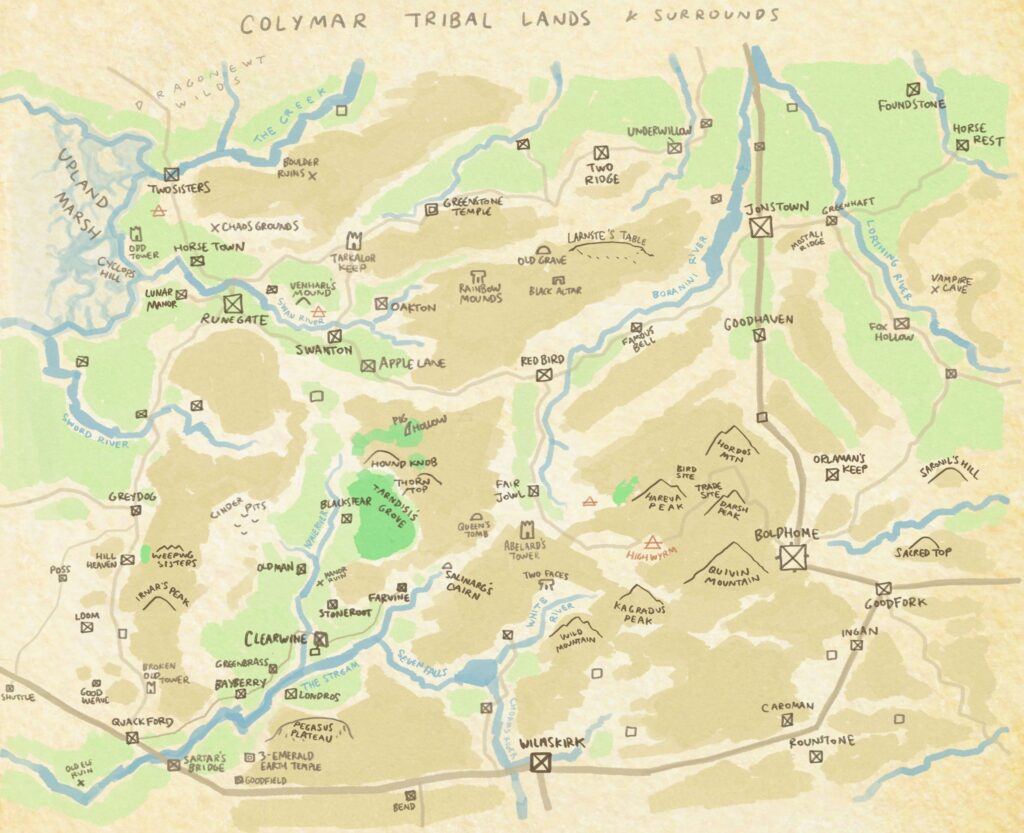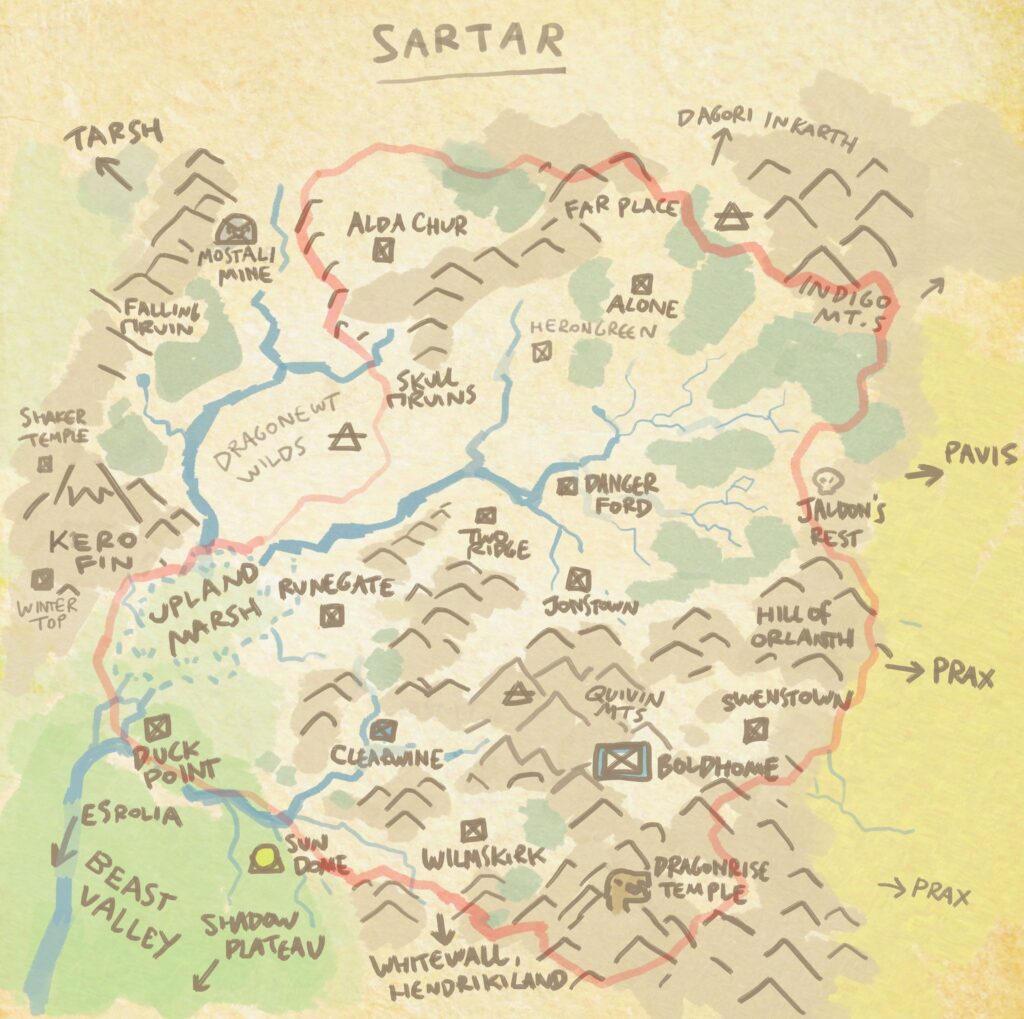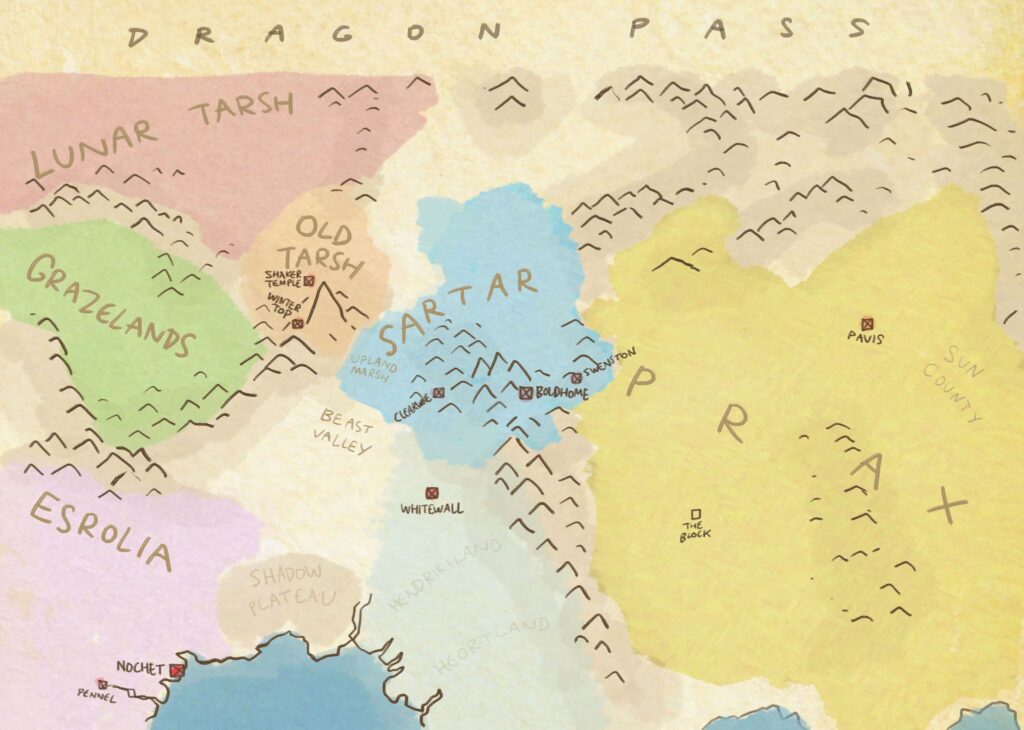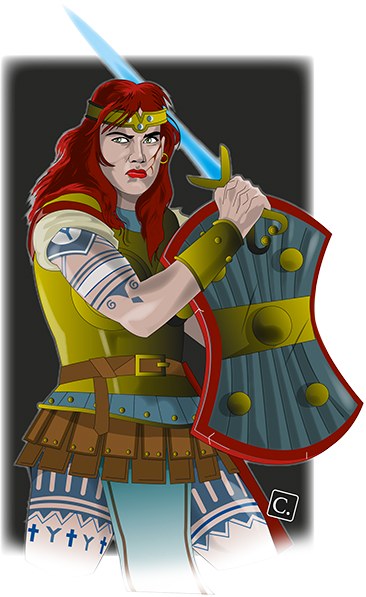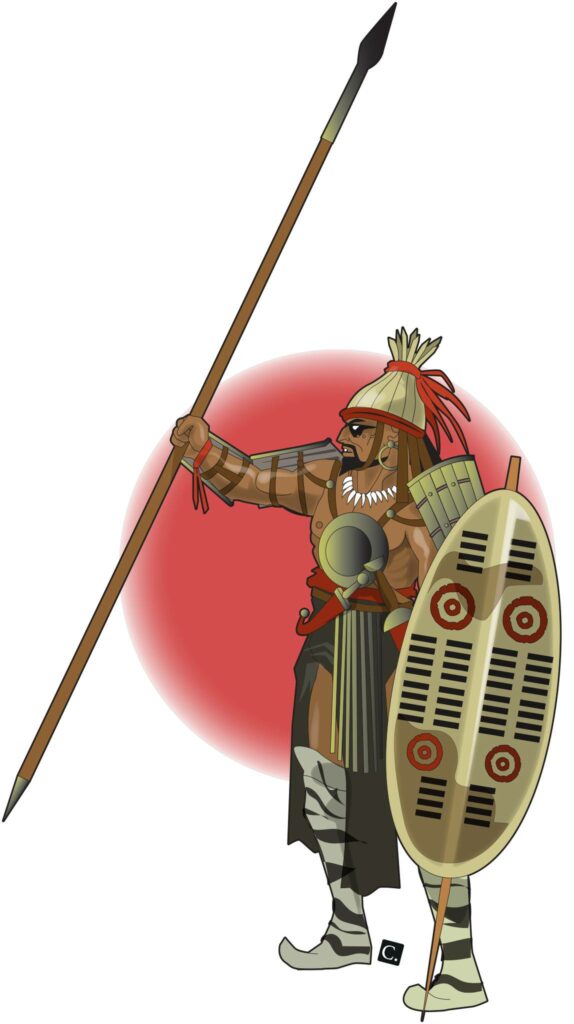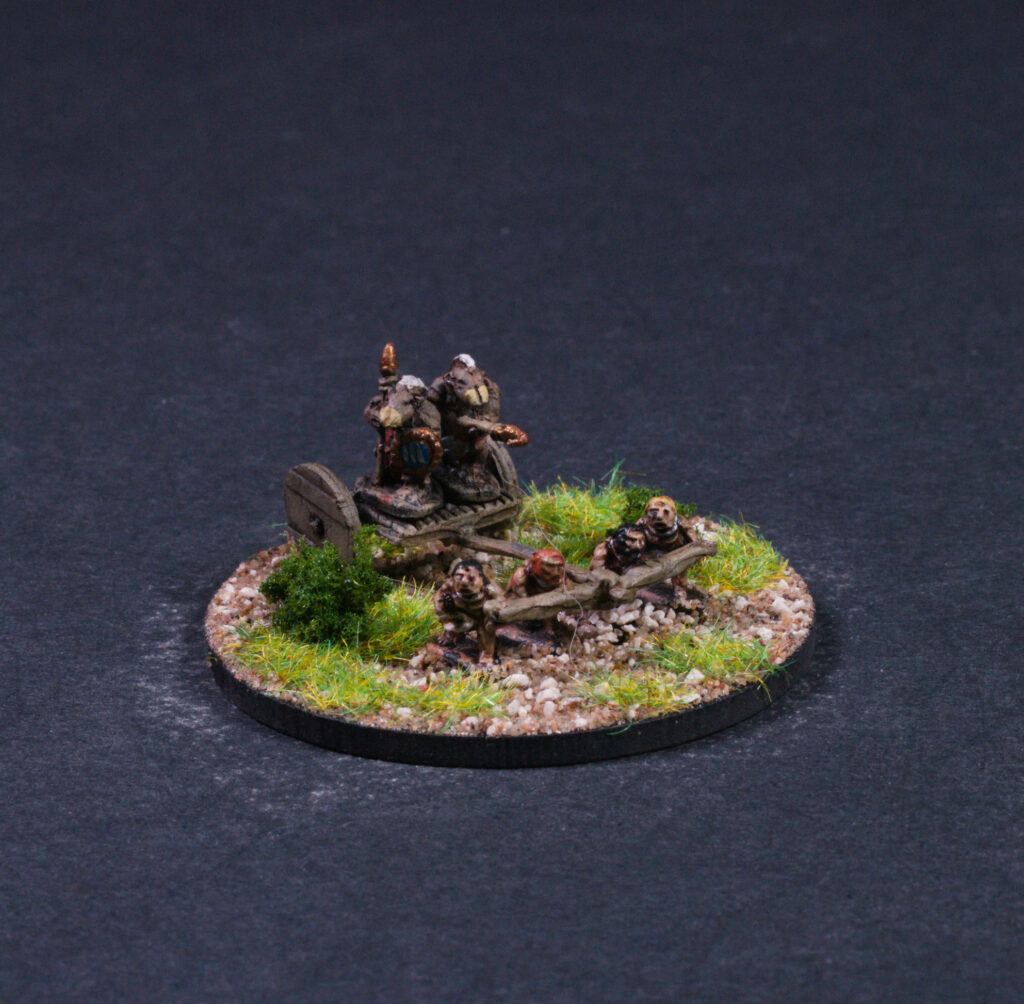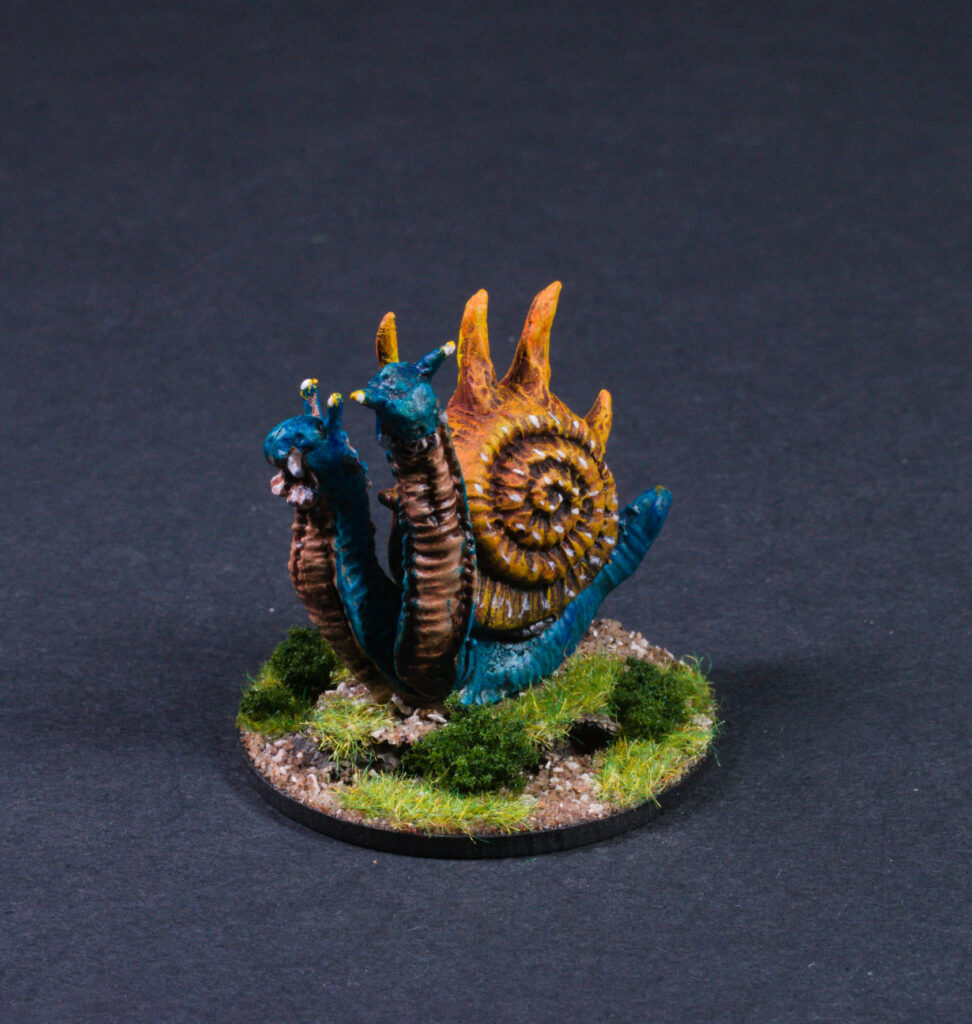Welcome to a new issue of the Journal of Runic Studies, the premier Malkioni publication for studies into the nature of Glorantha. If you haven’t subscribed yet, please consult with the spirit bound to the appropriate electronic page.
Last week was quite busy for a whole bunch of reasons (including some that are God Learners related), so the newsletter has less material than the week warranted. C’est la vie! In this era of hyper-connectivity we are supposed to learn living with FOMO, aren’t we?
God Learner Sorcery
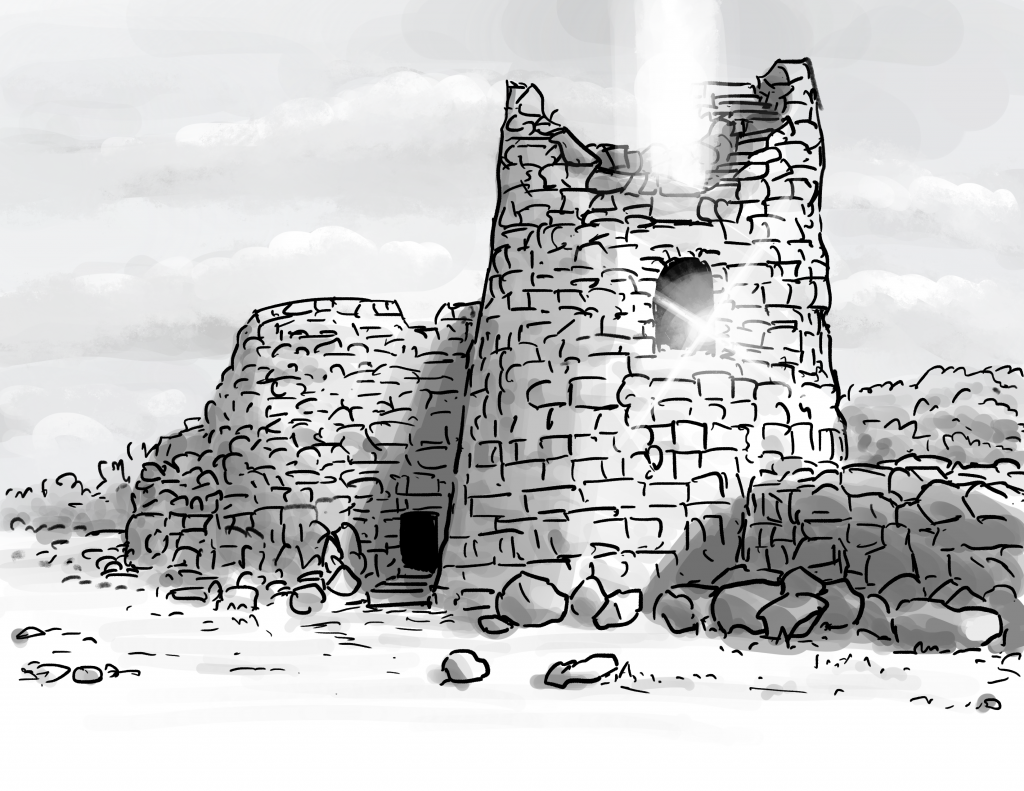
Here is what us God Learners were up to this week.
Episode 12: People of Glorantha: The Aldryami
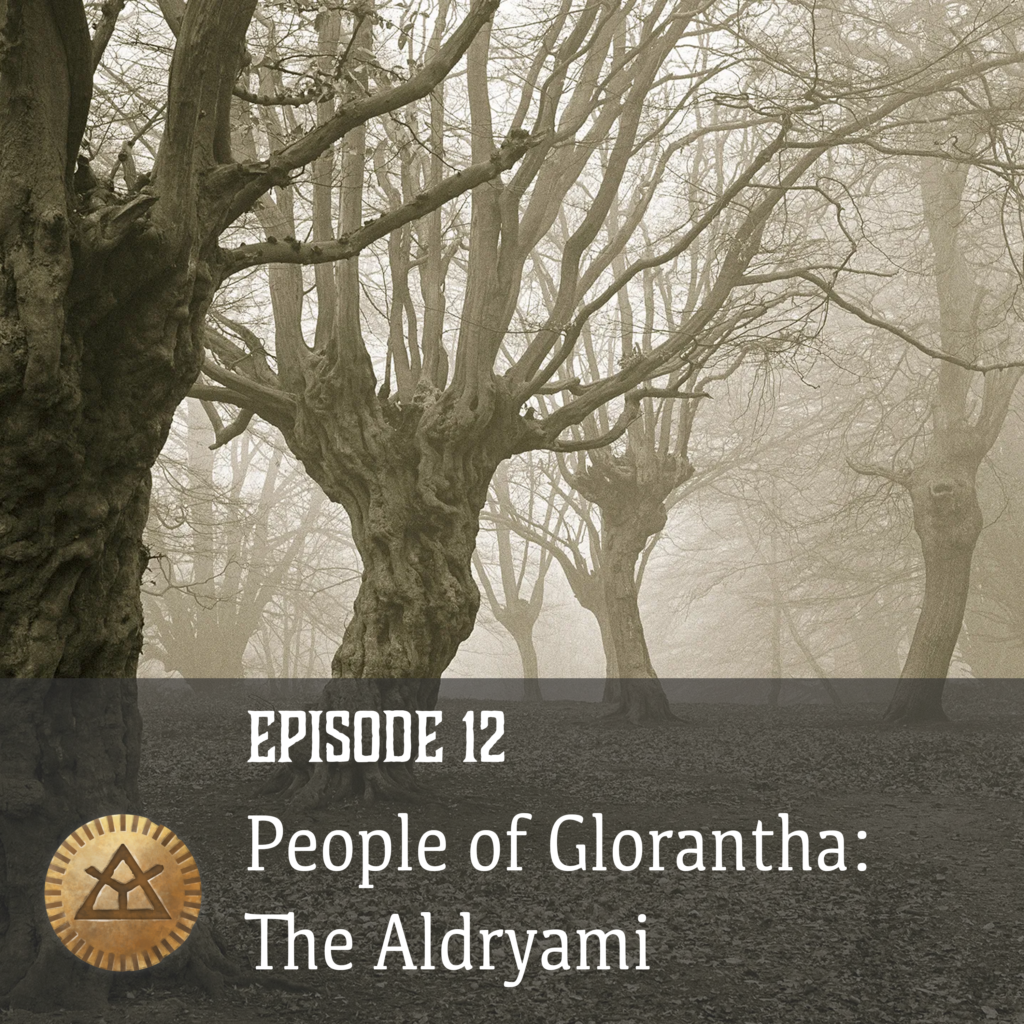
We released episode 12 of our podcast! We welcomed Shannon Appelcline, author of Designers & Dragons (among many other fine books) and expert on the Aldryami, the elves of Glorantha. We talk about their culture, religion, myths, psychology, and all the other material we’ll find in the upcoming “Elfpak” sourcebook!
Chaos is an Ecosystem
This week I wrote an article about how I’m approaching Chaos in terms of world-building and narrative hooks:
Why do some Heortlings get involved with Chaos when they know it’s really really bad?
Short answer (in my opinion of course): people are flawed, and Chaos is hidden under multiple layers that permeate through the edges of Heortling society.
Be sure to stick around for the addendum at the bottom of the article, since I might have not explained myself well enough in the main text…
Chaosium News

Here are this week’s Chaosium news!
Three Weirdest Things in Glorantha
James Coquillat asks Jeff Richard what are (in his opinion) the three weirdest things in Glorantha. Jeff picks the Maidstone Archers (I love how James immediately asks about actually bringing these things into a game!), the Ducks (bonus points to Jeff for mentioning Donjon!), and the floating island Kylerela (which I don’t know anything about except that it’s a token in the Petersen Games’ Gods War board game).
Product Guide for RuneQuest
Jeff runs through the products of the RuneQuest line, explaining which ones you should get and in what order. I’m sure most of this newsletter’s readers have bought them all, but this is a good video for your friends, or for figuring out what to gift.
Warehouse Clearance Sale
It’s that time of the year, and you can save a bit of money ordering some RuneQuest Classic books, maps of Glorantha, and more. Before ordering, make sure to check which warehouse has what, and which warehouse ships to you.
Sad Spanish RuneQuest News
If we are to trust random people posting on forums (and why not? Professional journalists even do it these days), it looks like the Spanish edition of RuneQuest won’t get its Glorantha Bestiary translation. It currently has the rulebook and Gamemaster Screen Pack, but sales numbers are not good enough for the editor, EDGE Entertainment, to continue with other books.
Jonstown Compendium

The Jonstown Compendium is Chaosium’s community content program for all Gloranthan games, hosted on DriveThruRPG. Disclaimer: all the relevant links are affiliate links that hopefully will let us cover some of the hosting and maintenance costs for the website and podcast! Thanks for using them!
The Life Thief
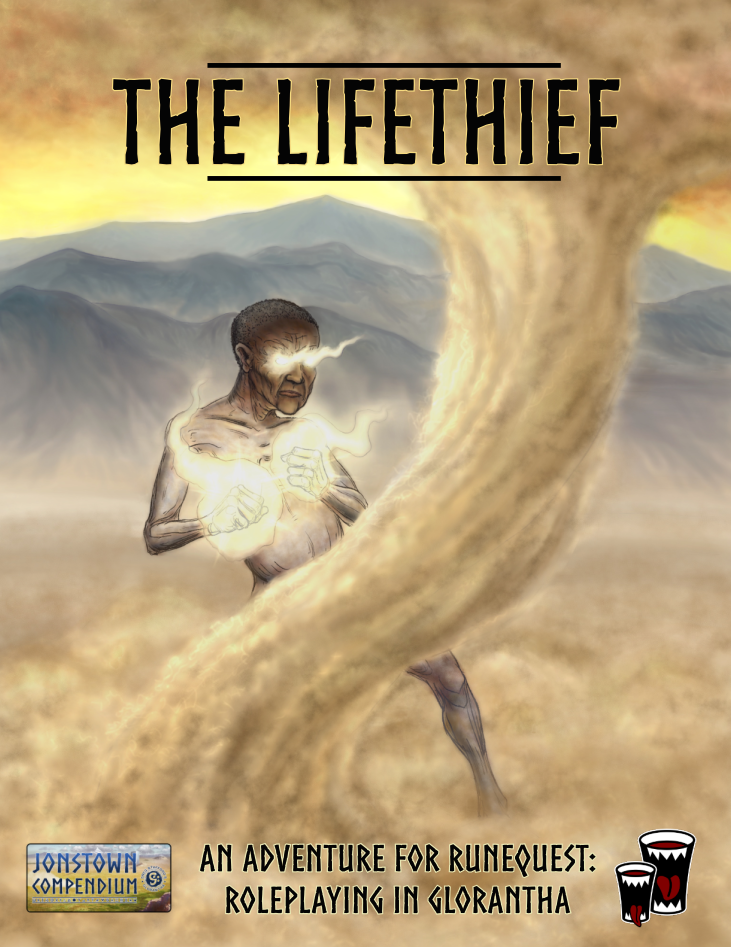
Diana Probst released The Life Thief, with art by Kirsti Herbert, which means that at least half of Beer With Teeth was directly involved in this thing. This adventure deals with the Dead Place, shamans, and ugly growing things that shouldn’t be growing.
The authors say that it works well after Gifts of Prax. It’s optional of course but if you want to be Diana’s favourite person, you might as well do what she says.
Jonstown Area Map
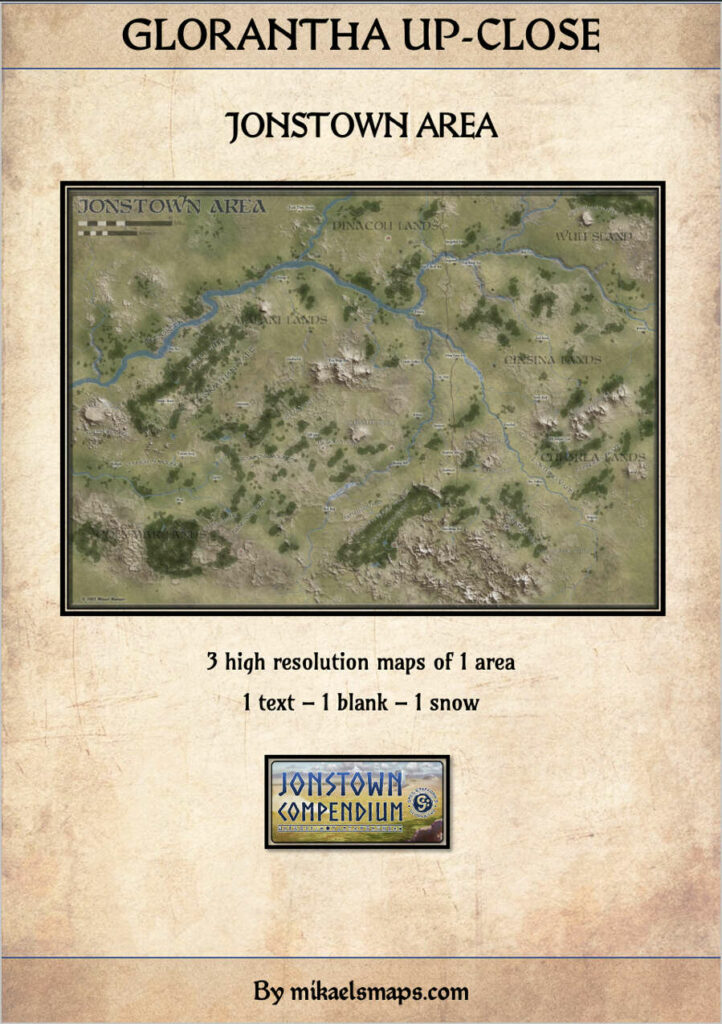
Mikael Mansen is still mapping Glorantha! His latest release focuses on the RuneQuest Starter Set area of Jonstown.
Sneak Peek at the East Isles Pirates
Scott Crowder has revealed the cover of his upcoming “Pirates of the East Isles” book!
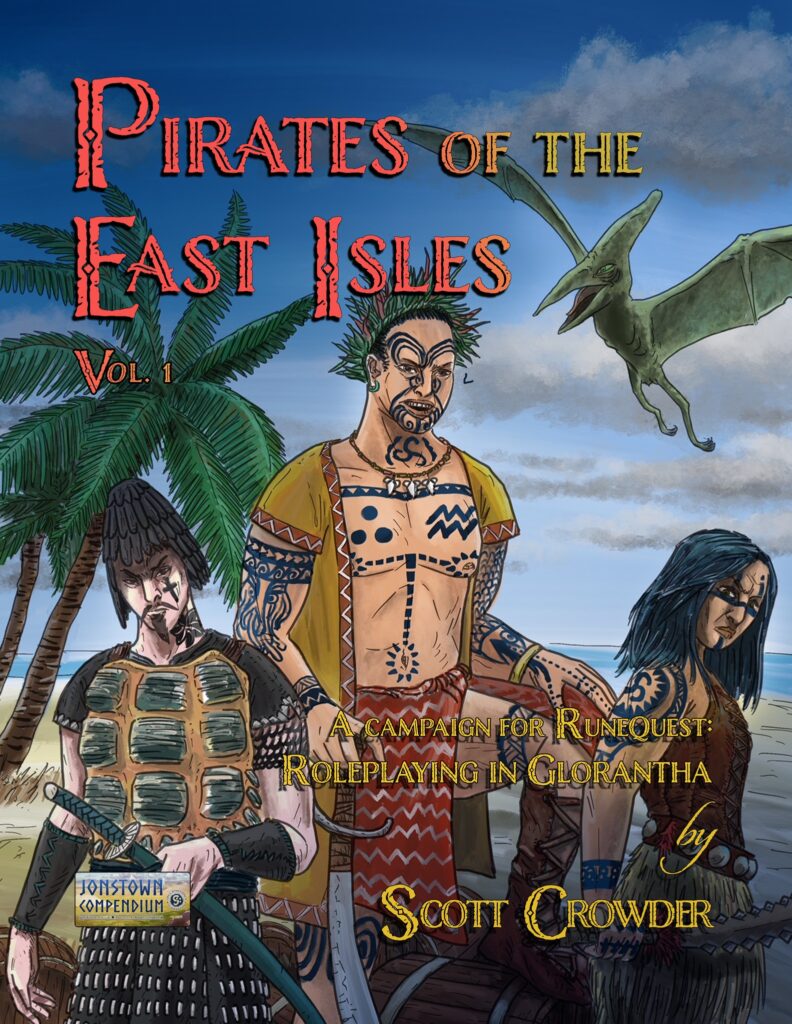
With proofreading finished and layout almost complete, I’m hoping to have this out in time for Father’s Day. You know deep down every dad’s a pirate!
Disclaimer: I did some art for Scott on this book, including the cover itself.
Jeff’s Notes

Jeff Richard, the current mastermind on everything Gloranthan at Chaosium, is often posting notes and thoughts on the RuneQuest Facebook group. Here’s our curated list from the past week. A partial archive of these sources is compiled on the Well of Daliath.
Phalanxes in the Yelmalio Cult
Jeff has a “shocking fact” about Yelmalio cult:
the Yelmalio cult did not always fight in phalanxes, let alone in pike formations. At times they have been better known for being horsemen or even charioteers! Starting in the late First Age the Sun Dome Temples became increasingly known for their disciplined spear formations. By the Second Age, the Sun Dome Templars had recognized that discipline plus their long spears gave them a tremendous advantage even against more powerful war gods.
In Prax, the Yelmalio cult was invited in by the Yelm worshipping Pure Horse People, who recruited the Sun Dome Templars to fight against Thog and his allied dark trolls. That’s the Yelm connection in Sun County by the way – a nearly forgotten connection to the Khan of the Horse People, their suzerain.
Often I’m getting lost with all the different Yelmalio cult timelines, between those who are on horses and those who are on foot and those who fight here or there. Someone will have to make a diagram some day…
Edit: now archived on the Well of Daliath here.
A Few Notes on Terminology
Jeff talks about the terminology he uses:
I rarely use the word “Heortling” to describe the Orlanthi of Sartar and Heortland, prefering “Sartarite,” “Heortlander,” or even just “Orlanthi.” When I get manuscripts with the term, I usually edit it to one of the above – unless the term is referring to the people of Dragon Pass and surrounding lands the First Age or early Second Age.
The reason for this is that the culture – its organization, language, even cultic practices, so dramatically changed that it is quite an anachronism to call them “Heortlings”. Most Sartarites call themselves “Sartarites”, while the Heortlanders often call themselves Heortlanders or Hendriki.
Even if you ignore the cultural and historical reasons, I’m all for making terms easier to understand and grasp, especially for newbies. The people of Sartar are Sartarites, and the people of Heortland are Heortlanders… that’s good, right?
In the First Age, the people of Dragon Pass called themselves the “people of Heort” or Heortlings. This lasted a bit into the Second Age, but when the old tribes disappeared, the old institutions were gone, and folk started to talk with dragons, I expect that changed. Only Lhankor Mhy scholars likely still do that, like the use of the Latin title “Dei Gratia Suecorum, Gothorum et Vandalorum Rex” by the early modern Swedish kings.
More on that here. And by the way, Jeff pronounces “Heortling” as “Hee-yort-ling”.
In between the First Age and the Third was the Empire of the Wyrms Friends. The Dragon Pass Orlanthi were the foundation of the EWF. They lost much of their ancient culture during this period of dragon worship. The splendid and colorful age combined many parts of many ideas to make a new wholeness. When the EWF collapsed and was destroyed the successors were not a restored version of the First Age Heortlings, but something new.
What we have in the Third Age is not the same culture as in the First – even the Orlanth cult has changed, with the Orlanth Rex cult giving great authority to the Prince and tribal kings. The Orlanthi of Heortland had far greater cultural and religious influence from Esrolia (remember they had tried to conquer Esrolia in the late Second/early Third Ages), and later strong influences from the Holy Country (and lesser influences from the Lunar Empire). I think a different and less anachronistic term is more than warranted.
Jeff continues:
the [Dragonkill War] killed pretty much anyone who could call themselves Heortling with a straight face. The Hendriki were not a Heortling tribe (they were formed out of rebels against the Broken Council and called themselves Hendrikings for a good reason) and outside of the Kingdom of Dragon Pass (which later became the EWF).
Language similarities follow the same idea:
Sartarite/Heortlander is heavily influenced by Esrolian. Old Pavic might be the closest to Second Age “Heortling”.
Edit: now archived on the Well of Daliath here.
The Spread of the Empire of the Wyrms Friends
Here’s some Second Age history:
The EWF influence spread through the so-called Barbarian Belt in the 800s. Lakrene was EWF by 850, Anadikki by 870, and parts of Brolia were taxed around 890. The process was for draconic groups to enter the Orlanthi lands, intimidate them and kill the leaders, then impress them with kindness. Once acclimated to draconic ways, the tribes were eventually made responsible for collecting the EWF taxes, and spreading their word, to the next tribe or clan to the west. The collectors were well rewarded in dragon lore, and in valuable goods. Thus a few great behemoth dragons slowly wended their way across the land, escorted by regional tribesmen. As a result, a wave of refugees always preceded the EWF missionaries, eventually collecting in the backwards, poor land of Brolia.
If, like me, you’re utterly unfamiliar with these Second Age region names, Jeff provided the following map so you can follow along:
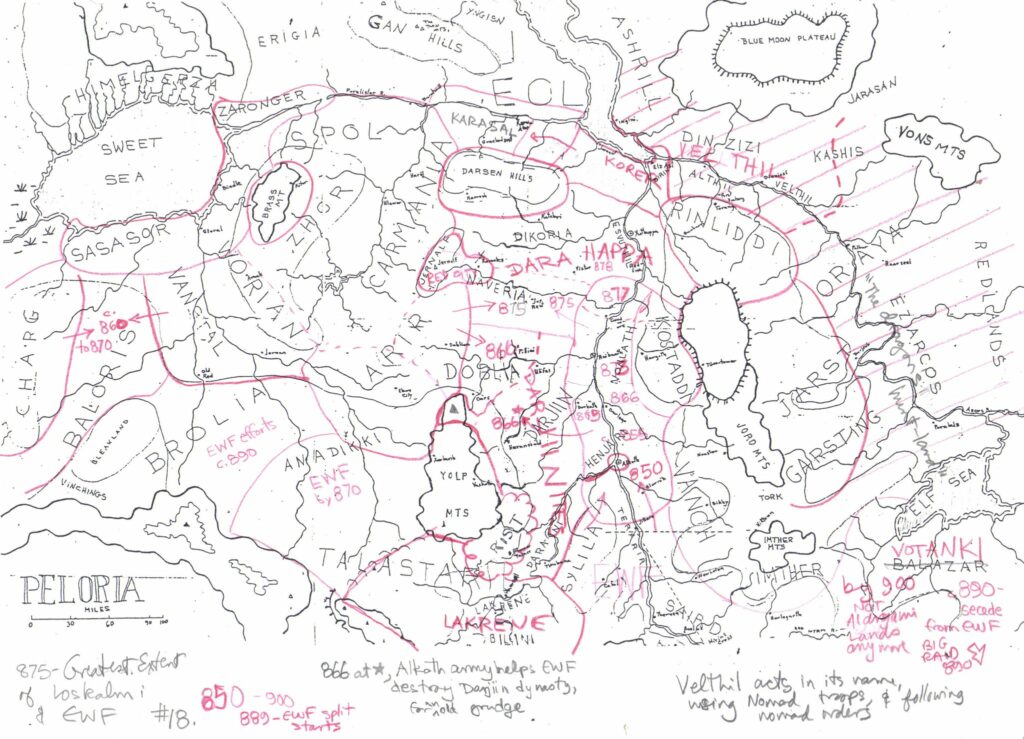
So if we think about how this might have worked, we might have some Storm Voices who can speak Auld Wyrmish riding wyverns or wyrms, some intelligent wyrms, a few other dragon speakers, maybe a dream dragon, some dragonewt auxiliaries, and plenty of tribal militia (some riding dinosaurs) and mercenaries (Humakti, Yelmalio, etc.). That’s pretty impressive, and can quickly roll over opponents. Then you show kindness and magnanimity to the defeated and offer them something to gain. It just steamrolls along.
Until of course it stops.
Edit: now archived on the Well of Daliath here.
The Carmanian Empire
Since these latest posts from Jeff have not been archived on the Well of Daliath (yet), I’m going to keep copy/pasting for a little bit:
The Carmanian Empire lasted from about 750 to about 1250. It was founded, as the stories go, by “atheist barbarians from the West”. For most of their history “atheist barbarians” were able to rule a polyglot empire that consisted of Pelandans, Dara Happans, and Theyalans. The ruling dynasty were skilled at respectfully acknowledging and using the gods of their subjects without submitting to any of them.
In a world where there is evidence that gods actually exist, being an “atheist” is mostly about what you think these entities are. Jeff stated that the Carmanians are “‘atheists’ in the sense that the gods are explainable magical phenomena that can be studied and controlled.” Remember that sorcerers totally agree that, say, there’s a big, generally blue guy who calls himself Orlanth and has Storm magic. But these sorcerers don’t worship that guy nor do they acknowledge that he’s anything special — except that he’s a big powerful pile of magical energy, and they are totally looking for ways to bind it and use it!
I don’t think it’s a coincidence that the Red Goddess first showed up in the middle of the Carmanian Empire, a place full of crazy sorcerers.
The leaders ruling dynasty often assigned autonomous appanages to members of their family. The most famous of these is when the Three Brothers divided the world. Nadar of Carmania was a great king (or shah) but had no sons. His daughter was married to a Dara Happan emperor (Sarenesh) and had three sons. When Nadar died, the sons were acclaimed rulers of both Carmania and Dara Happa. The senior son Sassacar (Kewetesh in Dara Happan sources) received Carmania and the title of King of Kings (Padishah), while the middle son Heredesh was given Dara Happa. The youngest son Verenmars received nothing except command of the armies fighting against the EWF – he conquered a kingdom of his own in Saird.
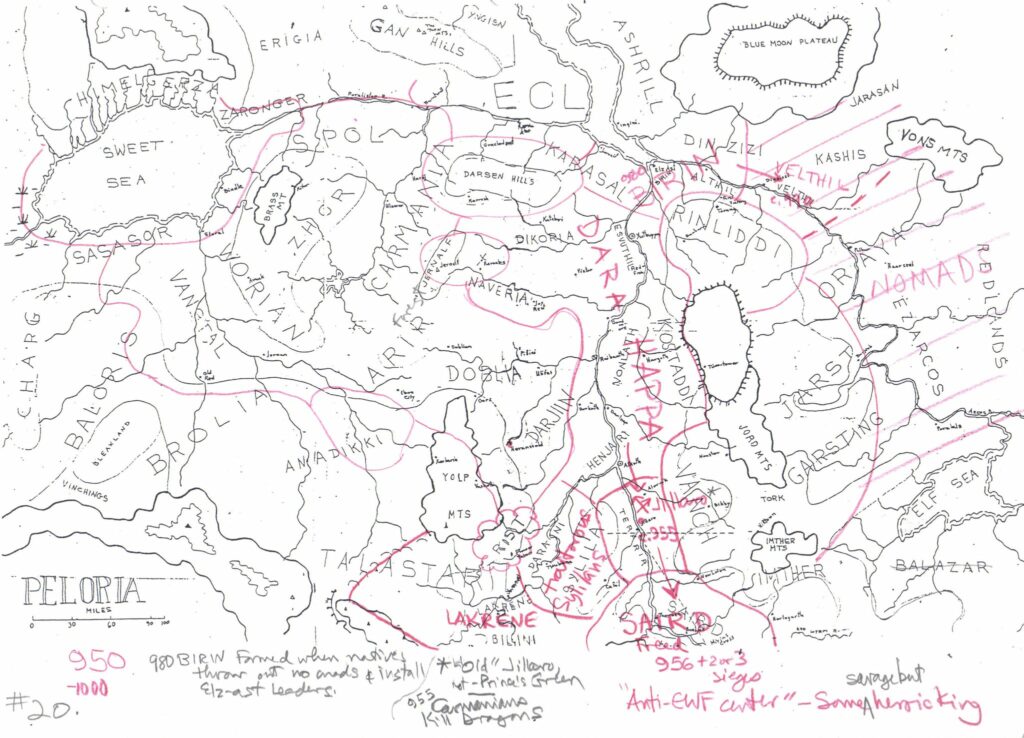
Of course the children of these brothers fought each other. Heredesh’s son Karsdevan proclaimed “I am not a Carmanian” and over the next few generations there were purges of Carmanian influences from Dara Happa, that eventually became three generations of dynastic conflict that only ended with the Invincible Golden Horde and the Dragonkill War.
The Carmanian dynasty retained their “atheist” reputation for their entire history, and the ruling dynasty were patrons of an Malkioni sect that had an elaborate dualist cosmology and adapted deities from its subject peoples into comprehensible forms. Individual members of the ruling dynasty were often eclectic in their practices, and histories show the cults of Yelm, Humakt, and even Storm Bull.
Jeff notes:
Having “atheist barbarians” dominate Peloria and locked in conflict with the dragon-mystic Orlanthi of the Empire of the Wyrms Friends gives us something that feels very different from our Third Age conflicts.
The atheist barbarians though were definitely preferably (at least to the Dara Happens and Rinliddi rebels) to the “Urox barbarians” of the later Carmanian Empire. This was founded in 1139 by usurpers from Vangstal and ruled until the Battle of Four Arrows of Light in 1147.
This battle is listed to have happened in 1241 in the Sourcebook and the Guide, so I don’t know if Jeff made a typo here. But that battle is when the recently created Red Goddess brought the recently discovered Crimson Bat to the Carmanians, and utterly destroyed their capital and ruling family.
Of course, the Carmanian rulers are “barbarians” as far as the Dara Happens, Pelandans, and Theyalans are concerned. They speak a strange language, have odd customs, and their food is strange! And their bread is made of black rye, not wheat or barley. They worship our gods strangely, do not offer sacrifices to their own gods, and have evil sorcerers among them who claim to command gods and spirits.
Edit: now archived on the Well of Daliath here.
Tarshite, Vostor, and Fazzur
Let’s keep going with random bits of history, this time with recent Tarshite history (if you’re new to this, Tarsh is the formerly Orlanthi and now Lunarized Kingdom located on the other side of Kero Fin from Sartar):
King Pharandros of Tarsh has been on throne for 15 years in 1625. Educated in Glamour and Syllila, Pharandros is culturally a Lunar Heartlander. The son of the famed Lunar magician and polymath, King Moirades, who ruled for over 30 years, and grandson of the heroic King Phargentes One-Arm, who ruled a quarter-century, Pharandros suffers somewhat in comparison to the deeds of his ancestors. He is a generous patron of the Lunar University of the Provinces, and has recruited famed scholars and artists from far and wide. He has sponsored the construction of many grand buildings, including the Moirasseum, expansions of the royal palace, and building many shrines, monuments, and temples.
Pharandros has two half-siblings – Inkarne, who is the newly acclaimed Feathered Horse Queen, and Phargentes, the teenaged son of King Moirades and Jar-eel (from the union in 1610 which killed Moiraides). Neither live in Furthest.
The bulwark of the Lunar Dynasty in Tarsh has been the Orindori clan. Vostor Blacktooth was right-hand of King Phargentes, and a general of the Lunar Army, who fought at Grizzly Peak. Vostor grew up in the Lunar Heartlands, in the household of the exiled princes, Philigos and Phargentes. Vostor was 24 when the Empire re-invaded Tarsh, and he commanded a cavalry contingent in the fight, showing himself to be clever, confident, and competent.
The Battle of Grizzly Peaks happens much later, in 1582, and marks the definitive victory of the Lunars in Tarsh. Also, to understand the bit about the “exiled princes” we need to roll back to 1538 when Palashee Longaxe, an old-school rebel, manages to take back Tarsh from the Lunars. Philigos and his entourage have to flee to Furthest. Palashee sits on the throne for almost two (probably very unstable) decades, until the Lunars “re-invade” for good, with Vostor Blacktooth leading some of the attacks.
This should be enough to follow Jeff with the next bit:
Though Philigos was slain, Phargentes made a brilliant recovery, slew Palashee, and became king himself. The year was 1556. Vostor was rewarded with Dunstop and most of Kordros Island.
Vostor had four sons and one daughter by two wives. They were all loyal and brave. The brothers all became Lunar soldiers who fought often for their king. The eldest son, Farrad, died at age 28 in the Battle of Grizzley Peak (1582) which smashed the Sartar army. The second son, Goslem, died at age 23 in the Battle of Bagnot (also 1582), when he acted rashly and attacked too soon. The third son was Wassail. He was quick to rise in the priesthood and helped Phargentes arrange the difficult magic which helped kill Sartar prince Terasarin in 1600. Fazzur was the youngest son, born in 1564. He was a gifted child and a talented soldier, receiving his commission early. Vostos’ last child, a daughter, was born in 1568 and was named Harsta. She was a proud and haughty noblewoman, and wed the son of King Phargentes – Moirades – and was the mother of Pharandros.
Fazzur was the dominant figure in Pharandros’ court, becoming a Lunar General, and later Imperial Governor-General of Dragon Pass. He was never much of a “politician” but served his nephew ably and loyally. Fazzur was removed from his imperial offices by the Red Emperor in 1621, and was replaced with Tatius the Bright, from a Raibanth noble house closely tied to the Red Emperor and his court.
Fazzur has two sons, Onjur and Annstad, and unlike their father, both regularly clash with their royal cousin. Both are learned men, greatly gifted in mind and body, and talented soldiers like their father. Onjur led the defense of Tarsh against a major Tusk Rider raid, killing their leader in personal combat. In Furthest, Annstad was notorious mainly for seducing priestesses and married women, and for his good looks and sybaritic lifestyle. He surprised all by initiating to Orlanth Thunderous at Kero Fin in 1625.
The year 1622 was a busy year in the Gloranthan meta-plot, but that’s when this “major Tusk Rider raid” happened. Called either “Battle of the Porkers” or “the Great Boar Hunt”, it saw the Tusk Riders mount a massive raid from the Ivory Plinth into Tarsh. Some sources say that Fazzur himself was also heavily involved in organizing the Tarshite defences.
As for Annstad, he will surprise people even more when he joins the side of Argrath Whitebull… unless he’s a double agent? Indeed, Jeff reveals that “Annstad is also a Red Goddess initiate…..” With that amount of dots at the end of the statement, it seems obvious Annstad is up to something….. (I’ll remind you that initiation into the Red Goddess requires Illumination, which means being able to ignore all kinds of cult limitations)
In recent years, the king has increasingly viewed Fazzur, and more importantly his children, as a growing threat. The Dragonrise and rebellion of Sartar has greatly contributed to the king’s paranoia, and when the King begged Fazzur to come out of retirement after the Dragonrise, the speed by which Fazzur gathered an army loyal to him terrified the royal court in Furthest. While Fazzur fought at Dangerford, Pharandros had several allies of the Orindori convicted on charges of treason.
Although Fazzur is still outwardly loyal and dutiful, his sons are in open disobedience to the king, seeking allies and fomenting trouble.
In 1625, King Pharandros is 43 years old. He is skilled with weapons, a Red Goddess initiate, is erudite, learned, and a skilled military captain. He is also reckless, paranoid, and unprincipled.
Again, don’t forget that initiation into the Red Goddess requires Illumination… Pharandros is not to be taken lightly.
Pharandros is married to a noble woman from the Lunar Heartlands. Together they have three children. If I recall, they were married in 1602 in a ceremony overseen by the Red Emperor himself!
Some other comments from Jeff:
One thing about Lunar Tarsh is that the Lunar population is overwhelmingly in Furthest and its environs. The city of Furthest, with less than 3% of the total population has 11% of the entire Seven Mothers cult and about the same percentage of the entire Hon-eel cult.
For the decade before the Dragonrise, the most famous humans in Dragon Pass were probably King Pharandros and Fazzur Wideread, followed by the Feathered Horse Queen and Sir Ethilrist. Prince Temertain was pretty much just installed in Boldhome to keep the Sartarite tribes happy and allow an end to Starbrow’s Rebellion.
Edit: now archived on the Well of Daliath here.
Dragon Pass in the Second Age
This history of Dragon Pass in the Second Age seems to re-use a lot of existing material from the Sourcebook and the Guide, so I’m not going to archive it here — it’s too long for that anyway. I’ll let someone else go through the exercise of spotting any new or different bits.
I will however show you this map Jeff shared for the occasion… it’s very interesting if you want to know where the EWF cities mentioned in various obscure material are located (Tikal, Bon Bolar, etc.) That’s possibly where your adventurers will find dangerously draconic items, creepy EWF ghosts, and more!
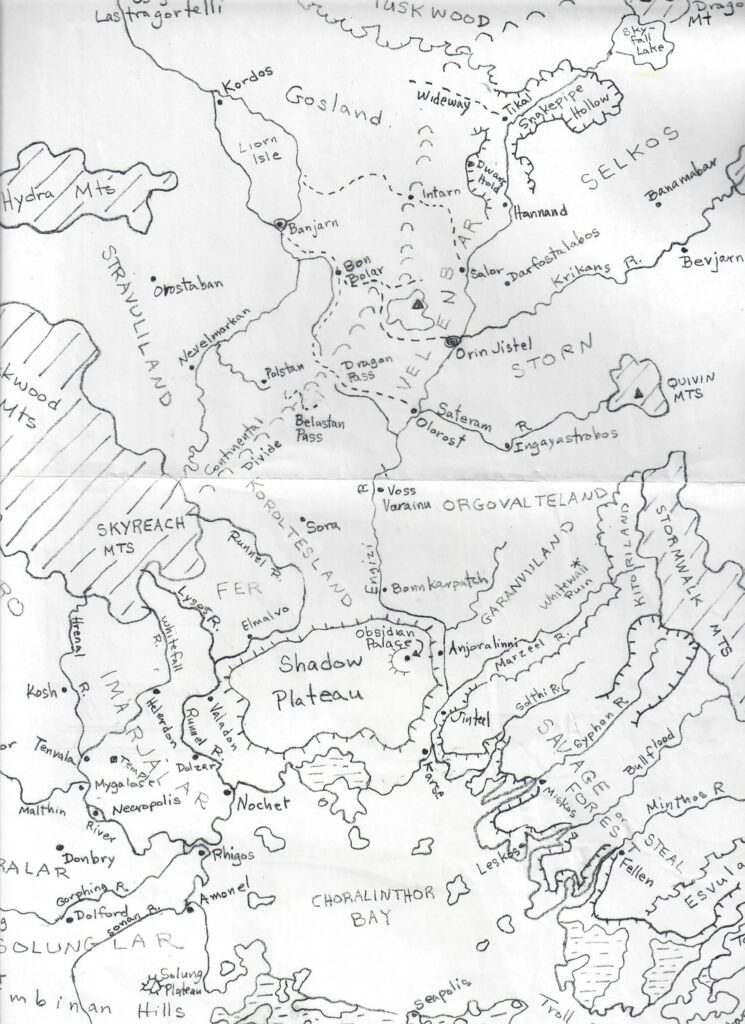
Edit: now archived on the Well of Daliath here.
Dragon Pass in the Third Age
These two big slabs of text on Third Age Dragon Pass (Part 1 and Part 2) have not been archived on the Well of Daliath yet, but are also too big to reproduce here anyway. They seem to mostly pull from available material from the Sourcebook and the Guide, similarly to the previous segment. It possibly clarifies a few things, such as how the Feathered Horse Queen rose to power, but nothing we haven’t discussed in the Journal already. Again, I’ll let someone else figure out if there’s any real differences or new bits.
Just like the previous segment, there is a map that comes with it, showing the early stages of the Dragon Pass repopulation.
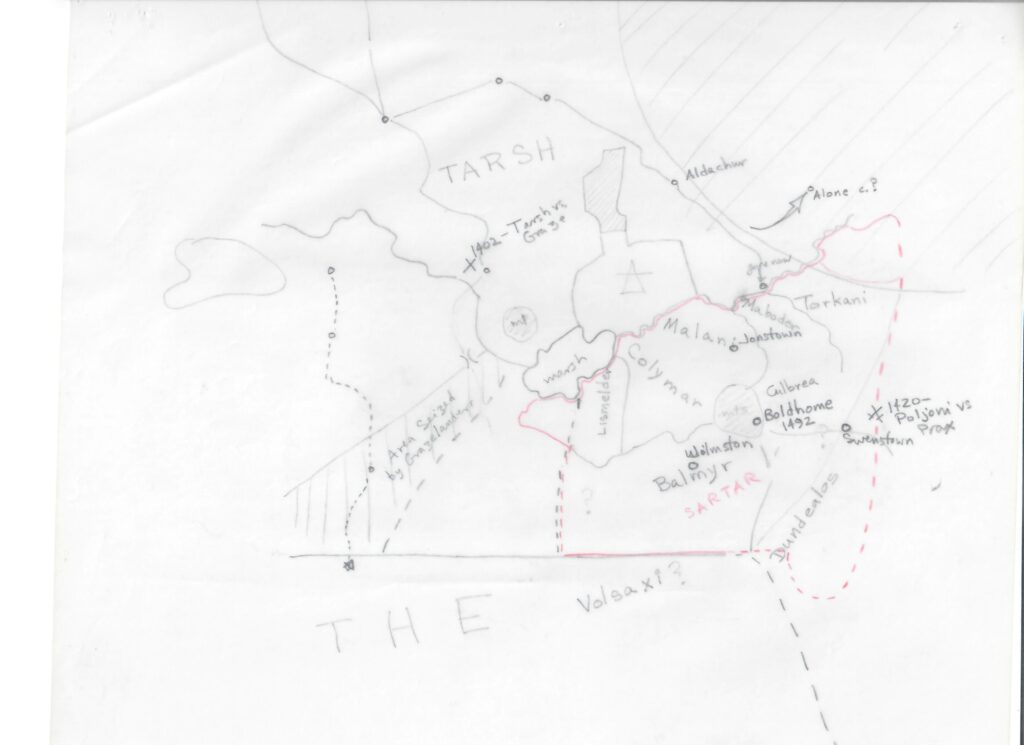
The second post continues the history of Dragon Pass, again drawing from and summarizing existing material. There’s a bit more emphasis on the pre-Sartarite tribes who “lived as lawless bandits, plundering the ever-increasing caravans that pass through”, and how they became a lot more civilized and organized under Sartar’s reign and subsequent dynasty. There are also a maybe a few more sentences about Tarkalor and Monrogh Lantern’s role in “bringing peace” to the Sun worshipers, who evolved into the modern Yelmalio cult. Hard to say — again I’ll let someone else do the “spot the differences” game. But Jeff spills the beans on the intent behind this editorial work:
There’s a lot in there. Little or none of the information is new, but the attempt is to present it from an overall Dragon Pass perspective rather than just Sartar and also to emphasise how transformational Sartar and his dynasty were.
One thing that is worth keeping in mind is that until 1602, Sartar was the richer and more powerful kingdom than Tarsh. Phargentes certainly was able to contest with Sartar, but needed imperial resources to do so. Even then, Sartar was able to more or less hold its own – and even expand – although the long term trend was towards Tarsh, especially after 1582. However, it was the Lunar Empire, not Tarsh, that conquered Sartar in 1602.
And of course there’s a map! Modern Sartar is starting to take shape…
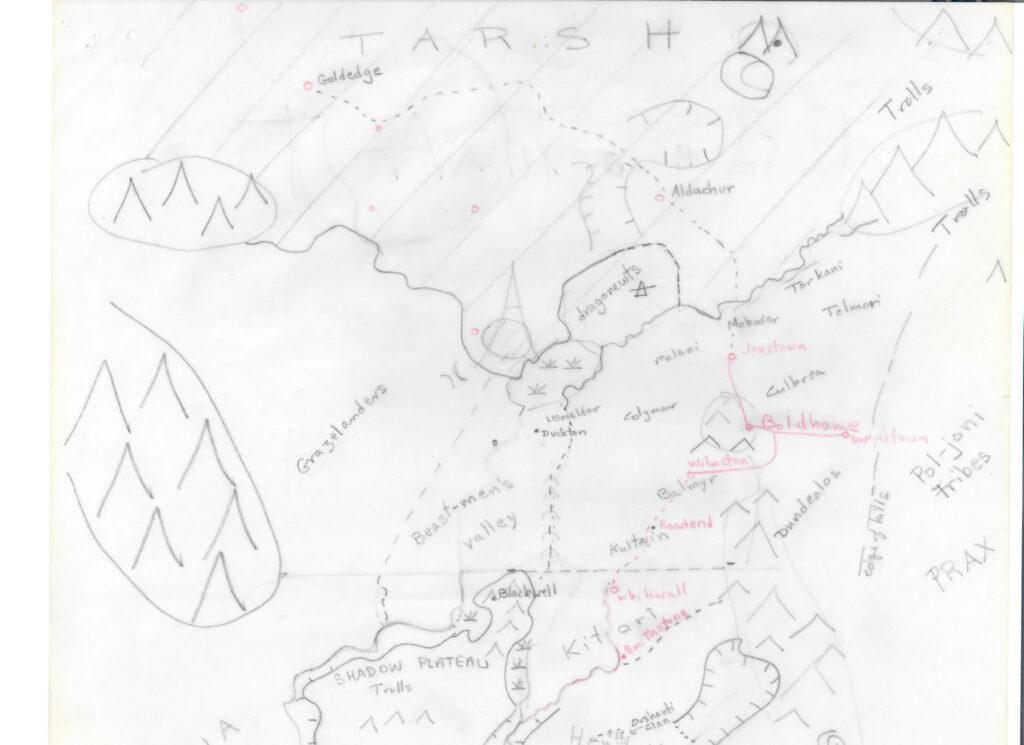
Edit: now archived on the Well of Daliath here and here.
Community Roundup
The community roundup is our highlight of interesting things being mentioned in the Glorantha-related Facebook groups, sub-Reddits, and other similar online places.
UK Games Expo & Eternal Convention

Two face-to-face conventions just ended: one is the UK Games Expo, the trade show for our hobby in the United Kingdom (pictured above all around Nick), and the other is the Eternal Convention in Bacharach am Rhein, in Castle Stahleck. If you were there, played some Gloranthan games, and have some convention report written somewhere, send us the link!
OpenQuest Online 2022

Anyway, Newt has announced an online convention for summer 2022, so if you haven’t yet, here’s your chance to play a system that some people have described as “the subset of RuneQuest that people actually play“. Registration is open on Warhorn.
Lee’s Pastel Maps
Lee O’Connor has shared these wonderful maps on Facebook, and you know I can’t pass a good map!
These were from a wee while ago, before the Starter Set map came came along and made everything much more relatable. (All hail the Starter Set map.) I was kinda filling in what I thought were gaps in the approaches used by the published maps I’d seen up to that point. (Those published maps are still great though.)
You will see that I hit my artistic pinnacle on the Sartar map with the drawing of the symbol for the Dragonrise’d Temple of the Reaching Moon. Rarr.
Matthew Constantine Unboxes the RuneQuest Starter Set
You probably already know what’s in the box — you most probably even own it yourself! But hey, maybe you need to show someone about it, in which case, here’s another unboxing!
Dario Corallo’s Next Art Pack
Dario Corallo is teasing his next art pack for the Jonstown Compendium with these drawings of Yanioth, Vasana, and an Agimori pikeman.
Ossi Hiekkala’s Character
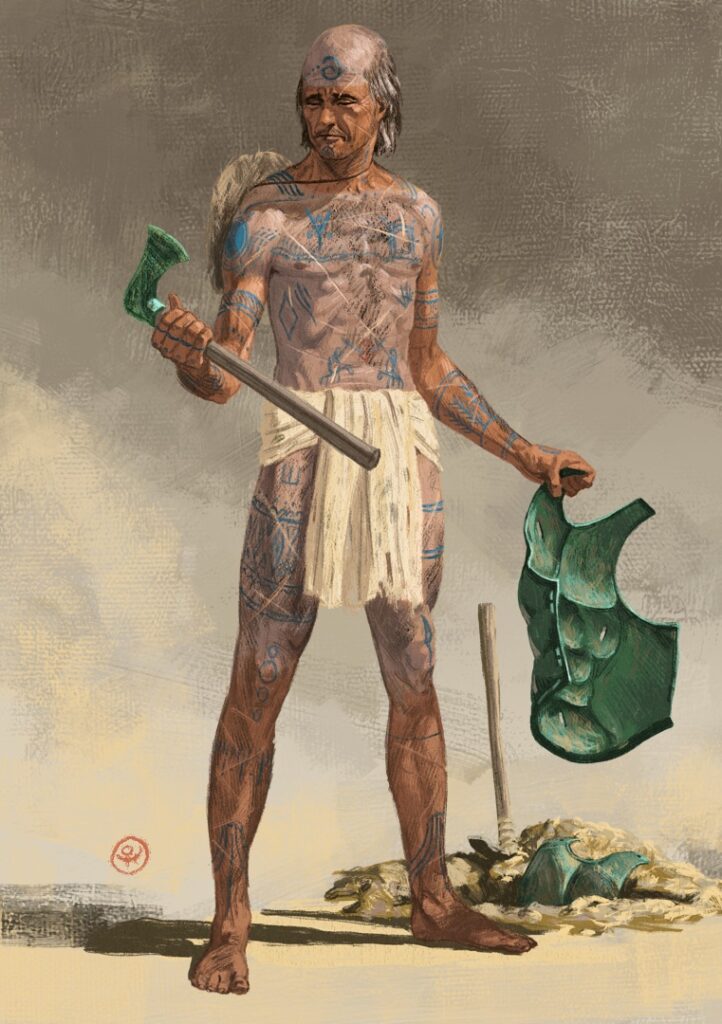
Chaosium cover artist Ossi Hiekkala shared this painting of Jaramoor the Potter, his “first ever RQ character” (Ossi had only been a gamemaster until recently). You can read Ossi’s character backstory:
When Jaramoor was young, he was a dashing light cavalry officer, a son of an Old Tarsh noble woman, grandson of a Storm Voice hero. He was a close friend of a prince and the royal household of Sartar, and the prince’s bodyguard, too.
And after one fatal negligence of duty: a refugee, a bandit, a drunkard and a beggar. He crawled out from the ditches of Badside and became a potter, rather lousy at that.
Old, sickly man. Nobody paid any attention to him, which was all he hoped for life.
Then the hoplites of the Red Moon came to his friends’ homestead, and he had to dig up the axe and the armor he had buried in the acidic soil of Prax.
Chaotic Miniatures
Felix Figure Painting has shared these awesome (as usual) paint jobs! A dragonsnail and some… mmmh, trolls with human slaves?
Orlanth Tattoo
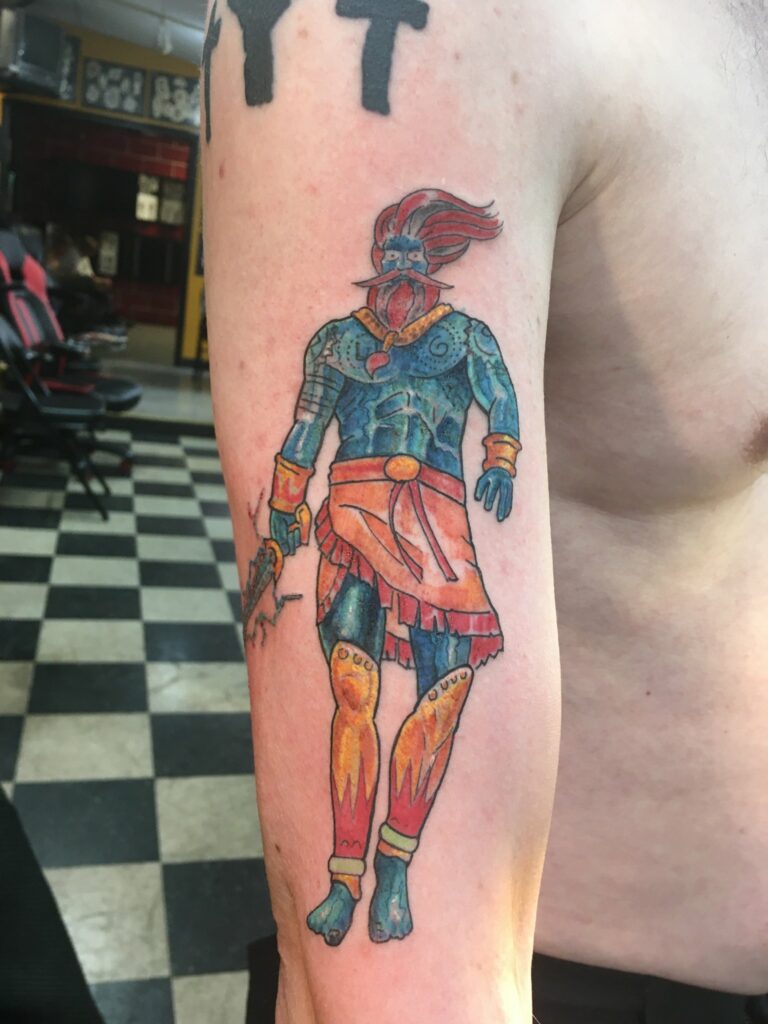
Danny Bourne shows his new tattoo… looks good!
Elsewhere on Arachne Solara’s Web
Not everything is about Glorantha, although most things are! Here are loosely relevant things that we found on the interwebs.
Barbie and Greek Mythology
Thanks to May Stab Mountains (over on the unofficial Chaosium Discord) for pointing out this Tumblr post by Copperbadge:
I have often used Barbie to explain Greek mythology, and people laugh until I explain it, and then they get really serious and thoughtful.
I say, “The Greeks ascribed aspects to gods. Apollo had many aspects, but all were Apollo. He’s like Barbie that way. She’s an astronaut, a veterinarian, and a rollerskater, but no matter which of those things she is in the moment, she is always still Barbie. She is Barbie in her aspect as.”
Then people get not only the idea of “aspects” of godhood, but also, well, the changeable yet eternal nature of Barbie.
And yes, I want a Maran Gor Barbie and a Chalana Arroy Barbie and most of all Babeester Gor Barbie (“Barbiester Gor?”) You know you want them too. The next best thing is of course Jar-Eel Barbie:
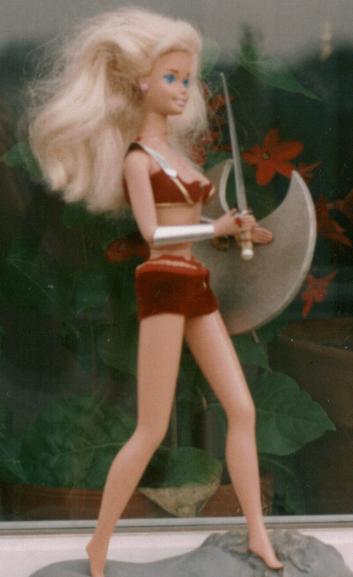
If you want, you can actually get some Greek mythology Barbie, including this awesome Athena Barbie:
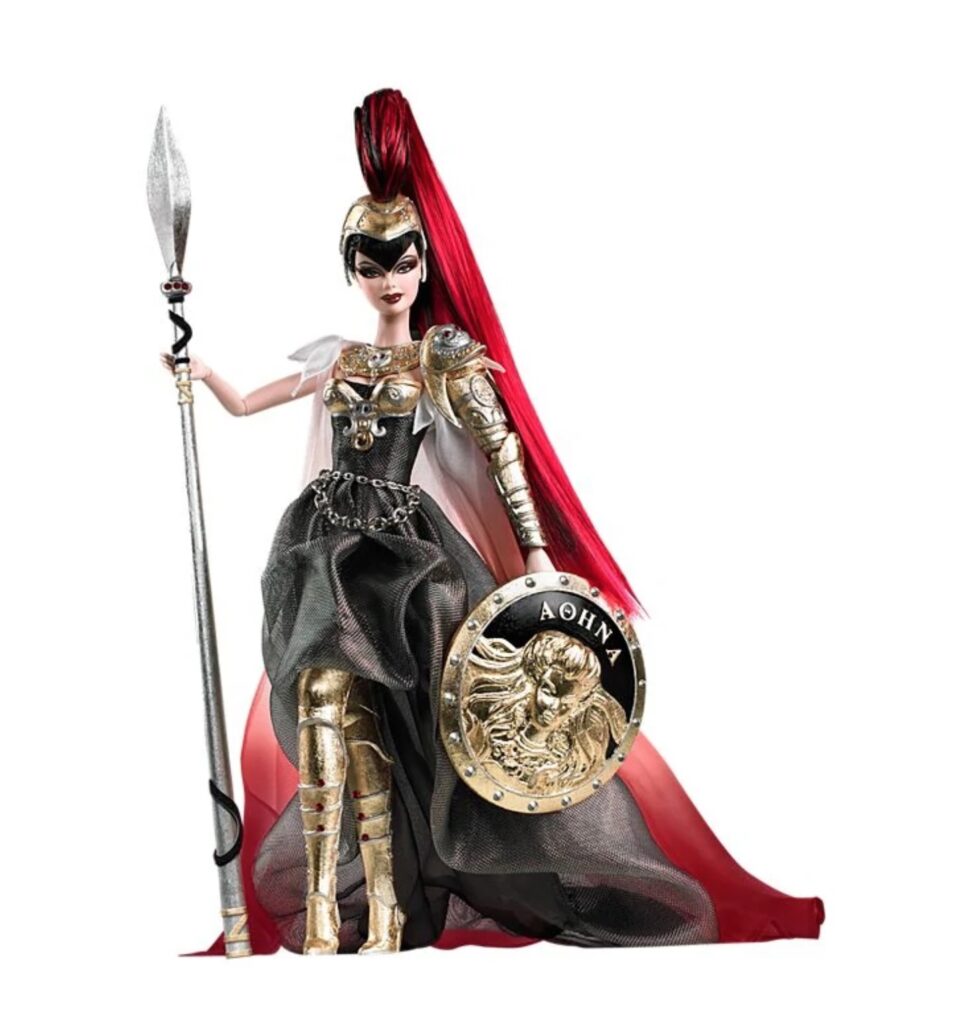
Thank you for reading
That’s it for this week! Please contact us with any feedback, question, or news item we’ve missed!






